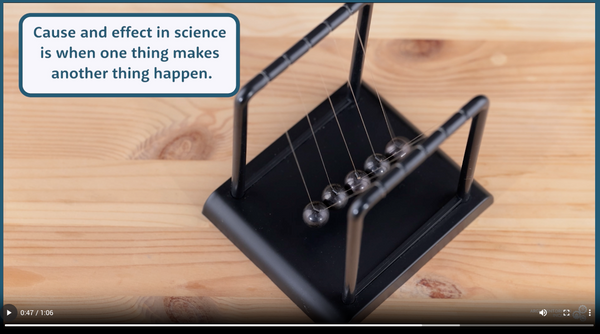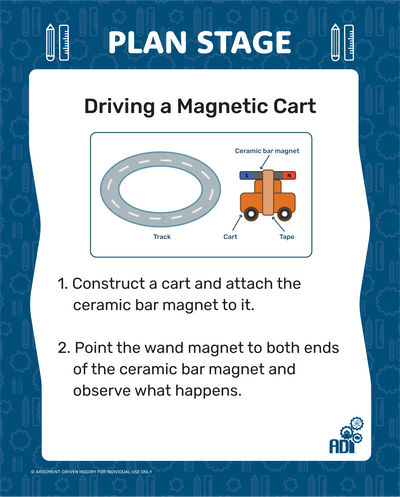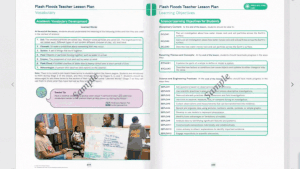Using ADI in the K - 2 Classroom to Increase Reading Comprehension
An interview with Dr. Victor Sampson, Creator of the Argument-Driven Inquiry instructional model and Professor at the University of Texas, Austin

Interviewer: What are the key components that schools need to focus on to improve students' reading abilities?
Dr. Sampson: Schools have been focusing on improving reading scores for several years. Kids have to master three parts to read.
The first skill is decoding, which phonics is especially helpful for. We've seen a lot of success in schools in figuring out the decoding piece of understanding symbols to sounds. From there, you go to fluency, where you can string those sounds together in a way that you can actually hear a word and have a sentence that's not all choppy and difficult to understand. Fluency doesn't seem to be a problem either, from scores on fluency such as fast reads and things like that.
What happens is that we go to comprehension, which is understanding what you read, and that's where we're falling down and not able to move the needle. Comprehension requires someone to know the content that they're reading about so they can actually understand what they're reading. And all of our school tests use science and social studies content to test comprehension.
The problem is it's a whole other language that no one's ever seen. So if kids haven't been reading and thinking about that content, when they come across words like thermometer, terrarium, mass or any number of things that are used in this content, they don't understand what they're being asked about. So they can read the word, they can say it out loud, they can do it fluently, they just don't comprehend what they're reading.
Understanding context clues alone doesn't solve the problem. It's a content issue. So, you need programs that give kids opportunities to read and learn content just as much as you learn to decode or read fluently or any number of other things.
And 20 minutes a week of science doesn't do it. And it's not reading just about butterflies either. Instead, it's reading to find information. So when you're trying to figure something out in science, you're looking up information and reading about that and pulling what's important. And that's the skill they need to develop.

An example video shown to students, narrated so they can follow along with the text. The image illustrates the concept of cause and effect in a scientific context, where the motion of one ball impacts the others.
Interviewer: Okay, so could you explain how the ADI K - 2 content helps increase comprehension?
Dr. Sampson: Our approach for K-2 students focuses on introducing literacy and integrating science to understand natural phenomena. We emphasize the importance of gathering information either through personal observation or from external sources. Recognizing that young students are still developing their decoding and fluency skills, we utilize videos with text to facilitate their comprehension. As students progress beyond second grade and gain fluency, we transition to more print-based materials, where they engage in reading and comprehension activities. This natural progression better supports their reading development as they move through kindergarten, first grade, and second grade.
Another point, too, is there's strong connections between if you want to improve someone's reading, have them write. If you want to have them improve their writing, have them read, right? And so that's part of that progression that we do in there, too, is where they're writing and reading in the service of making sense of something.

Plan Stage anchor chart for a classroom investigation. The teacher writes student ideas for creating an investigation titled 'Driving a Magnetic Cart,' which includes steps for constructing a cart with a bar magnet and using a wand magnet to observe interactions.
Interviewer: Thank you for sharing those insights. Before we wrap up, is there anything else you'd like to add about your approach to improving reading comprehension or how your program stands out?
Dr. Sampson: I think we’ve covered the main points, but I’d just like to emphasize that improving reading comprehension goes beyond just teaching kids to decode and read fluently. Our program is unique because it integrates science and literacy, allowing students to build content knowledge while developing their reading skills. By engaging them with real-world phenomena and encouraging them to read, write, and think critically, we’re helping students make meaningful connections that enhance their overall understanding and retention. This approach not only supports reading comprehension but also fosters a deeper love for learning across subjects.
View a sample lesson plan and student handout for 2nd grade.
Interested in learning more about ADI for K - 2?
Schedule a meeting with one of our program specialists to discover how Argument-Driven Inquiry can transform science teaching and learning in your district or school.

